click on the home button to go to the home page
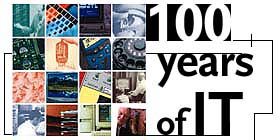
When we surveyed a panel of experts — along with visitors
to Computerworld's Web site — to help identify the 20th century's most
significant information technologies, they brought us face to face with
an important reality: IT isn't just computers or software. It's all the
technologies that over the past hundred years have changed the way we gather,
move and use information.
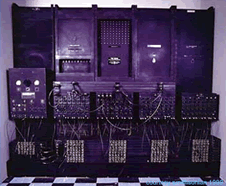 The ENIAC, the first large-scale, general-purpose electronic computer |
|||
| picture SI | |||
The IBM System 360. The IBM PC. Transistors. The photocopier. Television. Packet switching. The telephone. Credit cards. E-mail. The Web. What information technology products had the greatest impact on our lives and businesses over this century? We asked for input from people with a broad range of interests in technology — prominent CEOs, analysts, educators, attorneys and Computerworld readers. Their verdict: The earliest vacuum tubes, rotary phones and office copiers were as ingenious and significant — and their effects as unexpected — as today's smart phones, high-definition TV, the Web and Pentium III chips. "The fundamentals of technology advances are predictable — circuits per inch, bits per second, cost per megabyte — but the applications are not," says International Data Corp. analyst John Gantz, a member of our panel. "That's because human ingenuity is involved."
Big Iron
The Electronic Numeric Integrator and Calculator (ENIAC) (1946) was the first large-scale, general-purpose electronic computer. Its offspring, the Univac I (1951), became a television star during the 1952 U.S. presidential election. But the mainframe that changed the face of computing and drew the most mentions from our panel of experts was the IBM System 360 (1964).
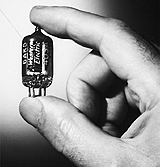 The precursor to the transistor, the vacuum tube |
|||
Before IBM began work on the 360 in the early 1960s, every new model required new hardware and software. But the 360 was designed as a family of compatible machines. "The 360 provided broad-based computing with standards," says Max Hopper, consultant and president of Max D. Hopper Associates. And Kroger Co.'s Michael Heschel, says the 360 "opened mainframe computing to the world."
But the 360 shares the spotlight with other key, large-scale computing innovations. The Hollerith paper punch card (1887) became a 20th-century mainstay of data storage — "the start of business systems analysis," says author and Computerworld columnist Paul A. Strassmann. The Manchester University Mark 1 (1948), affectionately known as "Baby," and John von Neumann's Electronic Discrete Variable Automatic Computer (EDVAC, 1947), the first stored-program electronic computer, were early steps forward.
The IBM 1401 (1959) was the first fully transistorized commercial computer. Digital Equipment Corp.'s PDP machines (1960) and IBM's Series 1 (1976) made departmental computing a reality. And Digital's VAX (1977) became the only real competitor to the 360 and its successors. Wang Laboratories Inc.'s word processing system (1971) brought computing power beyond the data center for the first time. Key storage innovations included magnetic storage (1949), the IBM Ramac (1957) and the Winchester hard disk (1973). Underlying them all was Alan Turing's 1936 conceptual model for all stored-program computing, the Turing machine.
On the Desktop
If there was a single machine that made desktop computing a reality, it would have to be the IBM
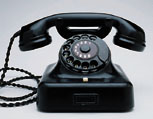
Personal Computer (1981).
IBM engineers designed the PC in a skunk works project in Boca Raton, Fla. — far from the center of IBM's mainframe-based universe in Armonk, N.Y. Cobbled together from standardized parts and borrowed ideas, the PC enjoyed instant success because of IBM's brand name — and its impact is a lasting legacy.
The PC "put computing power on the business desktop," says MIT research scientist Jeanne Ross. It ultimately "revolutionized business information and its use," Heschel adds.
Although the IBM PC was the desktop device most often cited by voters, there was no single machine that created desktop computing. Half a decade before the PC, electronics hobbyists could buy and build the MITS Altair (1975), the first microprocessor-based computer. The Apple II (1977), from Apple Computer Inc., was the first commercially successful off-the-shelf desktop computer.
At Xerox Corp.'s Palo Alto Research Center (Parc), the Alto (1972) and Star (1981) workstations pioneered the use of the mouse and graphical user interfaces. They were "the foundation of graphical user interface computing and graphic displays," Strassmann says. And a 1979 visit to Parc by Apple's co-founder and now-interim CEO, Steve Jobs, led directly to Apple's Lisa (1983) and Macintosh (1984).
The PC was built from standard parts — as was the Sun Microsystems Inc. workstation (1982) — and that standardization led to the creation of PC clones (1982).
Portable PCs led to laptop computers and handhelds, including the now-ubiquitous 3Com Corp. Palm (1996).
And home computers, including Atari Corp.'s Atari 2600 game machine (1977) and the Commodore 64 (1982) from Commodore Business Machines Inc., laid the groundwork for what would eventually be, as Erich Bloch, a fellow at the Council on Competitiveness puts it, "in every home and on every desktop — the universal appliance."
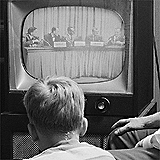 An early television |
|||
Out of the Labs
The transistor (1947) may be tiny, but its importance dwarfs nearly every other technological advance in this century. When researchers at AT&T Corp.'s Bell Laboratories discovered that a chip of semiconductor could replace a vacuum tube (1907), the transistor became "the basis of all technologies in the second half of this century," Bloch says.
The transistor was smaller, lighter, more durable and reliable than tubes, and it generated far less heat. Without it, "we'd be up to our ears in power plants to power all the triodes needed to fuel the Information Age," jokes Mark Pesce, chairman of the Interactive Media Program at the University of Southern California.
And transistors just kept getting smaller — first to form integrated circuits (1959) and then microprocessors. The first commercial microprocessor, the Intel Corp. 4004 (1971), was designed to power a desktop calculator. Within a few years, a successor, the Intel 8080 (1974), was the brains behind the first desktop computer kit, the Altair.
While Motorola Inc. and other vendors competed with Intel, IBM developed the first RISC processors (1974), whose offspring would eventually power workstations from Sun, Digital, Hewlett-Packard Co. and Silicon Graphics Inc. Gallium arsenide chips (1974) promised blazing speed for communications applications, even though they never cracked the mainstream processor market.
Lasers (1960), once imagined as sci-fi death rays, got smaller, too — to become a core technology for both printers and communications. And although nanotechnology hasn't delivered its promise of molecular manufacturing, it may yet prove to be how a future generation of transistors is put to work.
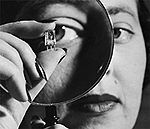 The transistor |
|||
The New Gutenberg
It wasn't the first xerographic copier; that was the Model A in 1949. But when the Xerox 914 — the first automatic, plain-paper office copier — appeared in 1959, it changed the face of information in businesses.
"Copying led to the standardization of paper. Fax and scanning were based from the acceptance of photocopiers. It's the way we think of record-keeping," says Peter G.W. Keen, chairman of Keen Innovations, a Computerworld columnist and one of many voters to cite copiers. In Strassmann's words, the 914 "made everyone a printer."
The fax machine itself, like the typewriter, dated from the 19th century. But both came into their own in 20th-century business. The electric typewriter (1933) gave way to the IBM Selectric (1961) and magnetic-card typewriters (1969). The Teletype teletypewriter (1920) made it practical to send typed information instantly across a wire and eventually found a place as a time-sharing computer peripheral.
The first commercial laser printer, the Xerox 9700 (1978), began a steady march toward the widespread use of laser printing. And the flat-panel display offered the first step toward a screen as convenient as the Xerox copy.
Information Everywhere
Is there any promise the World Wide Web can't fulfill? Ten years ago, it didn't exist. Last year, "it accounted for one-third of [U.S.] economic growth, according to the White House," says Robert Kahn, president of the Corporation for National Research Initiatives. "It has become telephone, loudspeaker, radio, television, cinema, phonograph, doctor, village square and lover," USC's Pesce argues.
All this from an idea first suggested in August 1990 by researchers Tim Berners-Lee and Robert Cailliau at Switzerland's CERN, the European Laboratory for Particle Physics, who thought it would be useful for "document registration, online help [and] project documentation." By October, they had a prototype Web browser. By early 1993, there were 50 Web servers worldwide. Within 18 months, that number had increased thirtyfold and was growing too fast to be counted accurately.
The nuts and bolts of the Web are now household words: HTML, URLs, browsers — especially Netscape Communications Corp.'s Navigator, which "made e-commerce serious business," Ross says.
Of course, without the Arpanet network (1968), created by the U.S. Department of Defense to connect its researchers, and the TCP/IP protocol (1975) that gave the Internet its name, the Web would have no road to run on. But when the National Science Foundation opened the Internet to commercial use in 1991, no one could expect what the Web would ultimately become.
 The IBM System 360 mainframe computer, Model 50 |
|||
On the Air
Until the arrival of the Web, only one form of information technology could claim to have revolutionized 20th-century life. And broadcasting hardly seemed like a world beater in 1920 when Westinghouse Electric Co.'s station KDKA in Pittsburgh reported the U.S. presidential election returns during the first broadcast of a regularly transmitting commercial radio station.
By 1924, there were 600 commercial radio stations — and the number grew so quickly that in 1927 the Federal Communications Commission was created to regulate them. Television began to come into its own in 1937, when the British Broadcasting Corp. began regular, electronic television broadcasts. The first transistor radio (1952) made portable wireless communications a practical reality and proved a commercial use for transistors.
How far-reaching was broadcasting's effect? "It's how the country got homogenized and information was transmitted," says Gary Reback, an antitrust attorney at Wilson Sonsini Goodrich & Rosati. "This has enabled mass communications and changed most people's living and learning habits in profound and subtle ways," Kahn adds.
"It brought world events to business and to the home," Heschel says.
The wireless Morse code transmissions that Guglielmo Marconi demonstrated in 1901 were largely overwhelmed by the voice radio demonstrated five years later by Reginald Fessenden. Nonetheless, today wireless data networks and spread-spectrum technology transmit more data than voice despite the growth of mobile and cellular phones — "the fastest-adapted of all innovations," Keen says.
Before the Internet
Telegraphs had sent messages across wires since the early 19th century, and packet switching — a system for breaking messages into pieces and routing them automatically — was first proposed in 1961. When Bolt, Beranek &Newman developed the IMPS packet switch for Arpanet in 1968, modern networking became a possibility.
But with Ethernet (1973), networking became a reality. Robert Metcalfe's system, tested at Xerox Parc, made it possible to connect large numbers of devices to a local network because each device "listened" before sending and detected when its messages collided with those of another sender.
Ethernet was "the basis of a distributed computer architecture," Strassmann says.
The 3Com EtherLink (1982) was the first network adapter card for the IBM PC. The Cisco Systems Inc. router (1986) added intelligence to the switches delivering messages between networks. And Asynchronous Transfer Mode made it practical to mix time-sensitive traffic such as voice and video over the same networks as ordinary data.
No More 'Number, Please'
The telephone, mentioned in some way by a third of our voters, was already having its impact on business communication and information technology by 1900. So, in fact, was the device that would launch the networking revolution more than half a century later: the Strowger telephone switch (1889).
The story almost seems like slapstick comedy: Almon Strowger, a Kansas City, Kan., undertaker, hired several engineers to design an automatic telephone switch when he suspected local operators were steering business to his competitors. That switch — and a telephone that could be dialed to operate it (1896) — were adopted by AT&T in 1916, making it possible for businesses to dial their own calls.
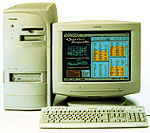 A PC clone |
|||
The Strowger switch "gave us the concept of switching," Keen says. And the dial telephone itself "changed our reach and range," Ross says.
Although the dial telephone let businesses direct their own switching, the Touch-Tone phone — invented in 1941 but made practical only by transistors in 1964 — "enabled the telephone to become a data-entry device," says CIO Communications Inc. publisher Joe Levy.
The four-prong telephone jack made it possible for customers to use different telephones interchangeably. Answering machines and voice mail let telephone users leave messages when no one could answer the phone. Modems (1957) made the connection between phones and computers, and the digital telephone network (1986) completed that connection.
Software
As software goes, e-mail may not seem like much. We don't turn to it to produce something, as with a word processor or spreadsheet. But e-mail may have had a greater impact — forcing business executives to learn to type and encouraging grandparents to climb aboard the Internet.
"I believe e-mail has changed how we communicate, who we communicate with and what we communicate about. And maybe I'm an IBM bigot, but I think PROFS [Professional Office system from IBM] got it rolling," Ross says.
PROFS — which remained the king of e-mail for years after PC-based mail systems were introduced — has been eclipsed by Internet mail systems.
But other software innovations are still making their mark. Relational databases, data compression, artificial intelligence and digital imaging are so common — and crucial — that we don't even notice them. And virtual reality has changed the way we interact with computers.
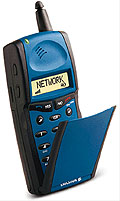 A cellular phone |
|||
Among the many software products that have been key to IT: Multics ("the first real operating system," Pesce says); Windows; Novell NetWare; Unix; Linux; CP/M; Mac OS; Digital's VMS; the Oracle and DBase II databases; IBM's CICS transaction monitor; Visicalc, Lotus 1-2-3 and Microsoft Excel spreadsheets; word processors; and Cobol, C, C++, Java and Visual Basic.
Beyond Bits and Bytes
When the first credit card hit New York in 1946, few people would have identified it as information technology. Even today, "plastic money" usually seems more like a contributor to electronic commerce than IT itself.
But credit cards "fundamentally transformed us to a symbol economy," Keen argues. "Without that experience, we couldn't have an information economy. The Internet rests on the credibility of credit cards."
Our expert panel made other unconventional choices for key IT products, too. The automobile "led to suburbanization of the world," Bloch says. The elevator "made skyscrapers possible," says Jim Ware, vice president of The Concours Group. The airplane made Federal Express Corp.'s overnight package delivery possible — and closed the speed gap between paper and electronic communications. Gene-splicing and the human genome project are already changing key information of a different sort.
But perhaps the most familiar of unconventional IT innovations comes from, of all things, office furniture. In 1964, Herman Miller Inc. rolled out its Action Office system, introducing corporate America to "open-plan" offices intended to improve communication and information flow. The result, says Duncan Sutherland, chief technology officer at Wilmer, Cutler & Pickering, "ultimately devolved into the now more or less ubiquitous Dilbert cube!"